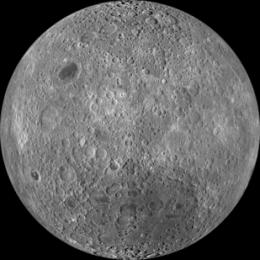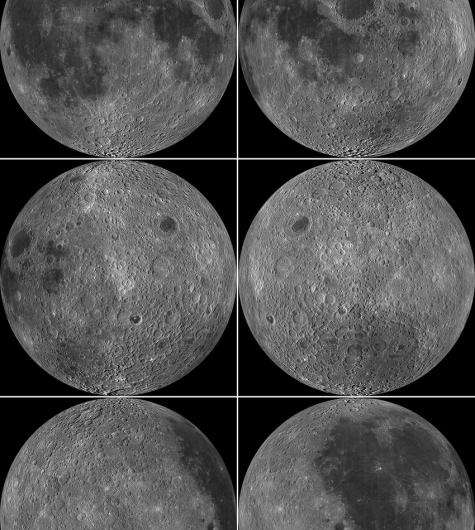Lunar farside serves as stunning prelude of images to come

(PhysOrg.com) -- Today, the Lunar Reconnaissance Orbiter Camera (LROC), run by the Arizona State University-based team under Professor Mark Robinson, kicks off a special series of featured images scheduled to be released daily over the next week.
The series of images serves as a prelude to next week’s release of NASA's Lunar Reconnaissance Orbiter team’s set of data from the mission's Exploration Phase along with the first measurements from the Science Phase.
"The LROC map products being released over the next week will not only serve the lunar science community for years to come, but also provide a roadmap for human exploration of our nearest neighbor," says Robinson, a professor in the School of Earth and Space Exploration in ASU's College of Liberal Arts and Sciences.
Among today’s highlighted images is the most detailed view yet of the farside of the Moon.
It was not until 1959 that the farside was first imaged by the Soviet Luna 3 spacecraft. And what a surprise – the farside was a different world, geologically. Unlike the widespread maria on the nearside, basaltic volcanism was restricted to a relatively few, smaller regions on the farside, and the battered highlands crust dominated.
Mosaics from the Clementine images did not observe the farside at illumination angles favorable for seeing surface topography. This mosaic constructed of LROC Wide Angle Camera images, provides the most complete look at the morphology of the farside to date, and will serve as a valuable resource for the scientific community.

LROC acquires high-resolution images of the lunar surface from a 50-kilometer orbit of any spot on the surface with resolutions down to 50 centimeters/pixel (19.7 inches/pixel) while LRO orbits at a speed of 5,800 km/hr (3,600 miles/hour). The imaging system consists of two Narrow Angle Cameras (NACs) to provide high-resolution images, and a Wide Angle Camera (WAC) to provide 100-meter resolution images in seven color bands over a 57-km swath.
The global mosaic released today is comprised of over 15,000 WAC images acquired between November 2009 and February 2011.
Each month, the WAC provides nearly complete coverage of the Moon under unique lighting. As an added bonus the orbit-to-orbit image overlap provides stereo coverage. Reducing all these stereo images into a global topographic map is a big job and is being led by LROC Team Members from the German Aerospace Center (Deutsches Zentrum für Luft- und Raumfahrt; DLR). Several preliminary WAC topographic products have appeared in LROC featured images over the past year, including Orientale basin and Sinus Iridum. For a sneak preview of the WAC global DEM with the WAC global mosaic click here.
The Planetary Data System (PDS) serves as NASA’s permanent online data archive providing measurements to the science community and the world at large. As part of the March 2011 PDS release, the LROC team posted the global map in ten regional tiles. Eight of the tiles are equirectangular projections that encompass 60° latitude by 90° longitude. In addition, two polar stereographic projections are available for each pole from ±60° to the pole. The full set LROC reduced data records (RDR) products will be available for download on March 15, 2011.
As the mission progresses and the LROC team’s knowledge of the lunar photometric function increases, improved and new mosaics will be released. These images, and the associated products derived from them, will guide engineers and scientists as they develop their plans for to explore the Moon both robotically and with humans. Monday through Thursday of next week, be sure to check LROC’s site for more stunning images and detailed descriptions.
Provided by Arizona State University


















